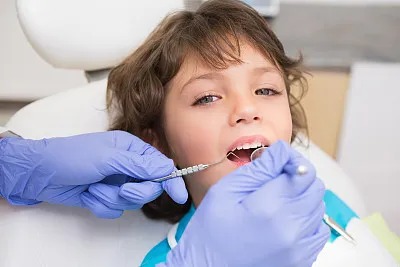The Essential Guide to Extracting a Tooth Safely and Effectively for Optimal Oral Health Care
Summary: Extracting a tooth can be a daunting experience for many, but understanding the process is key to ensuring safety and effectiveness. This guide aims to provide a comprehensive overview of tooth extraction, focusing on the preparation required, the extraction process itself, aftercare, and potential complications that may arise. By following these steps and seeking professional assistance, individuals can navigate tooth extraction with confidence. Maintaining optimal oral health care is crucial, and knowing how to approach tooth extraction safely makes a significant difference. This article serves both educational and practical purposes for those considering or needing dental extractions.
1. Preparing for a Tooth Extraction

Preparation for a tooth extraction begins with a thorough dental examination. A dentist will evaluate the affected tooth, review the patient’s medical history, and possibly take X-rays to understand the tooths roots and surrounding structures. This step ensures that the dentist has all the necessary information to proceed safely.
In some cases, certain medications might need to be adjusted or stopped before the procedure. Blood thinners, for example, can pose risks during extraction, so its crucial to discuss any current medications with the dentist. Additionally, understanding any allergies is vital to avoid complications from anesthesia.
Patients should also prepare themselves mentally and physically. Ensuring a good night’s sleep and having a reliable transportation plan post-procedure will aid in a smoother experience. Knowing what to expect can help ease anxiety surrounding the extraction process.
2. The Tooth Extraction Procedure Explained
The actual tooth extraction process typically starts in a dental office or clinic, where the dentist administers local anesthesia to numb the area around the tooth. This step is crucial to prevent pain during the extraction. In some cases, sedation may be offered for anxious patients to help them feel more relaxed.
Once numb, the dentist will use specialized tools to loosen the tooth from the surrounding gum and bone. The dentist may perform a simple extraction if the tooth is visible above the gum line or a surgical extraction for impacted teeth, which are below the gum line.
After carefully removing the tooth, the dentist will clean the extraction site and may place gauze over the area to control bleeding. Instructions will be provided on how to care for the site to promote healing. Ensuring that the extraction is performed correctly minimizes the risk of complications and promotes optimal oral health post-extraction.
3. Aftercare for Maximum Recovery
After the extraction, following the dentists aftercare instructions is vital for healing. Patients should avoid rinsing their mouths vigorously within the first 24 hours to prevent dislodging the blood clot, which forms over the extraction site. Keeping blood clots intact is essential for proper healing.
Pain management is another critical aspect of aftercare. Dentists often prescribe pain relievers or recommend over-the-counter medications to manage discomfort. Patients should adhere to the recommended dosage and timing for these medications to ensure effective pain control.
Additionally, maintaining a soft food diet and staying hydrated helps facilitate recovery. Foods that are easy to chew and won’t irritate the site should be preferred, while hot beverages and spicy foods should be avoided until healing is underway.
4. Understanding Potential Complications
While many extractions proceed smoothly, it’s essential to be aware of potential complications that can arise. Dry socket, or alveolar osteitis, can occur if the blood clot at the extraction site dislodges, exposing bone and nerves, leading to severe pain. Patients experiencing increased pain after the first few days should consult their dentist immediately.
Infection is another risk following a tooth extraction. Signs of infection include swelling, fever, or pus discharge from the extraction site. If these symptoms arise, seeking prompt medical advice is crucial to address any underlying issues.
Finally, individuals may experience changes in their bite or jaw alignment following an extraction. Dental professionals can guide patients on the best course of action to restore proper alignment, if necessary. Understanding these potential complications helps patients prepare and respond effectively if they encounter issues during recovery.
In summary, extracting a tooth safely and effectively requires careful preparation, a clear understanding of the procedure, diligent aftercare, and awareness of potential complications. By being informed and proactive, individuals can enhance their oral health care and ensure a smoother dental experience. The guide serves as a valuable resource, underscoring the importance of professional dental assistance throughout the tooth extraction process.
This article is compiled by Vickong Dental and the content is for reference only.


